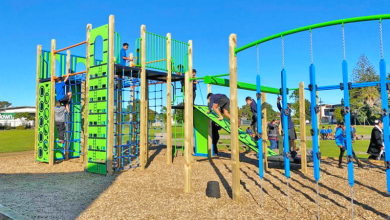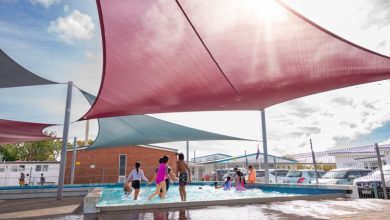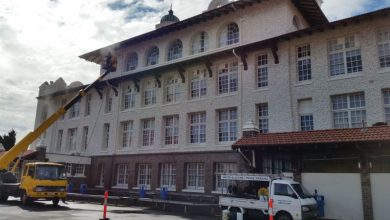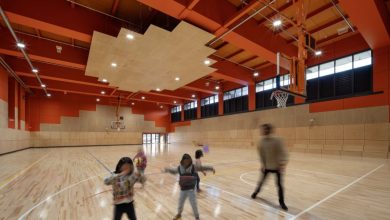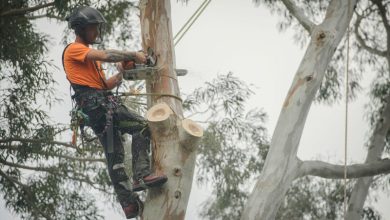Case Study Albany High School | Building a strong foundation
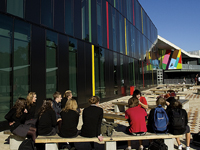
 It has long been noted in business circles that the work environment has a significant effect on productivity.
It has long been noted in business circles that the work environment has a significant effect on productivity.
Dreary buildings combined with bosses that micro-manage their teams can make for a pretty soulless way to spend the 9-5 working day, while open plan, collaborative and dynamic workplaces are inspiring staff to work through issues together and push themselves further.
Schools are now also recognising that this is the way of the future and are designing teaching spaces that enhance the style of education they aim to provide.
One school that has achieved this with great success is Albany Senior High School, situated on Auckland’s North Shore. The school caters solely for year 11, 12 and 13 students – the final three years of high school where the students are young adults, and it treats them as such.
There are no bells, students have to take responsibility for where they need to be and at what time. There are only three classes each day and those classes are 100 minutes long, allowing staff and students the time to engage, research and discuss the lesson topic without having to watch the clock too closely or rush off to other classes.
The open plan nature of the building, with classes held in learning commons that can see three or four classes sharing the same teaching space, also lends itself to the school’s philosophy of preparing students for the future. Businesses are increasingly using open plan, collaborative workspaces so the school’s design closely resembles the environment students will face in the workplace.
But it wasn’t an easy road to get the school, which officially opened in 2010, off the ground. Environment Court delays and delays with resource consent saw the school initially housed in prefabs on the site of Albany Junior High School a couple of kilometres down the road and meant, when consents were finally granted, the build programme was compressed to just 13 months.
Nigel Bent, property manager at Albany Senior High School, says to help speed up the construction process everything was precast. “The concrete floors, steel framing and façade were precast and assembled on site. At times during the construction it looked like a giant Meccano set.”
The handover of the 20,000m2 building was completed in two stages, with the school’s central atrium and one end handed over prior to the start of the first school term in 2010 and the other end of the building completed in April of the same year. The school’s four hectare site is also home to a gymnasium and a schoolhouse, built in 1897, from the original Albany Primary School whose refurbishment was a condition of the high school gaining resource consent. An external plaza, courts and sports fields are also part of the property.
Car parks are provided for staff, senior students and visitors underneath the main school building. “We had limited space on site and didn’t want the kids parking on the road as it is very busy,” says Bent, “So we developed 300 undercover car parks.” The only drawback is that the space is not recognised by the Ministry of Education as a teaching space and is not eligible for funding. The school is working with Travelwise to promote the use of skateboards, scooters and bikes amongst its students but, says Bent, that is bringing with it a whole new set of issues. “Most schools have done away with lockers which presents the problem of storage for their skateboards or bike helmets.”
A fully integrated security system with electronic locks and swipe card access provides safety and security for staff, students and equipment. Up to 40 cameras monitor external and high traffic areas and provide an additional level of security.
“Some people see it as a bit Big Brother-ish,” says Bent, “But from a safety and security standpoint it is good for us. If someone loses their swipe card all I have to do is deactivate it and issue a new one. It is much less hassle than if someone lost a master key.”
Swipe card access means students are also trusted to use the school and its facilities out of hours for additional study, sport or band practice. It’s about giving students opportunities to step up and take responsibility, says Bent. “So for those students that are in a band, even one that is not related to the school, why not let them use the facilities and equipment we have here to practice. The security system allows us to monitor and track what they are doing but it also allows them to realise they can self manage, and they can manage their peers and keep them in line if they need to. It comes back to treating the students like young adults.”
This drive for self management has also been extended to the internal working of the building – the lighting, heating and cooling systems are run through a building management system (BMS) that automatically turns the systems on and off at set times and allows Bent to monitor the consumption rates for each learning common.
Currently housing 800 students, the school has capacity for 1300 so the building is still settling and adjusting to each yearly intake of students. However, within five years there should be some interesting consumption rate data says Bent.
Breaking away from the traditional, closed classroom-style school has provided a number of additional benefits with regards to building maintenance. The ceilings mirror the open-plan nature and lighting, ducting and cable tracks aren’t hidden away above ceilings. This provides easy access for Bent and contractors working within the school and saves time in identifying where problems lie.
The use of one common area, multiplied 10 times throughout the building, makes it efficient and simple to source replacement parts. “All the light fittings and light bulbs are the same so I can order one knowing it will fit in all areas of the school,” says Bent. “If I have to replace a piece of carpet I just have to replace one piece not the whole hallway as it’s all the same carpet throughout. And if we need something new I can show the salesperson one space and then multiply it by 10.”
Both the construction and design of the building and the teaching style at Albany Senior High School can be described as innovative, contemporary and breaking with tradition. The design of the building, with its open, non-restricted, collaborative workspaces is reflective of the style of education the school wants to provide – nurturing, inspiring and empowering its students to excel when they leave school.
Albany Senior High School is building strong foundations for the future and, as Bent says, the strength in the building reflects the strength in teaching.
By Rebecca Wood


